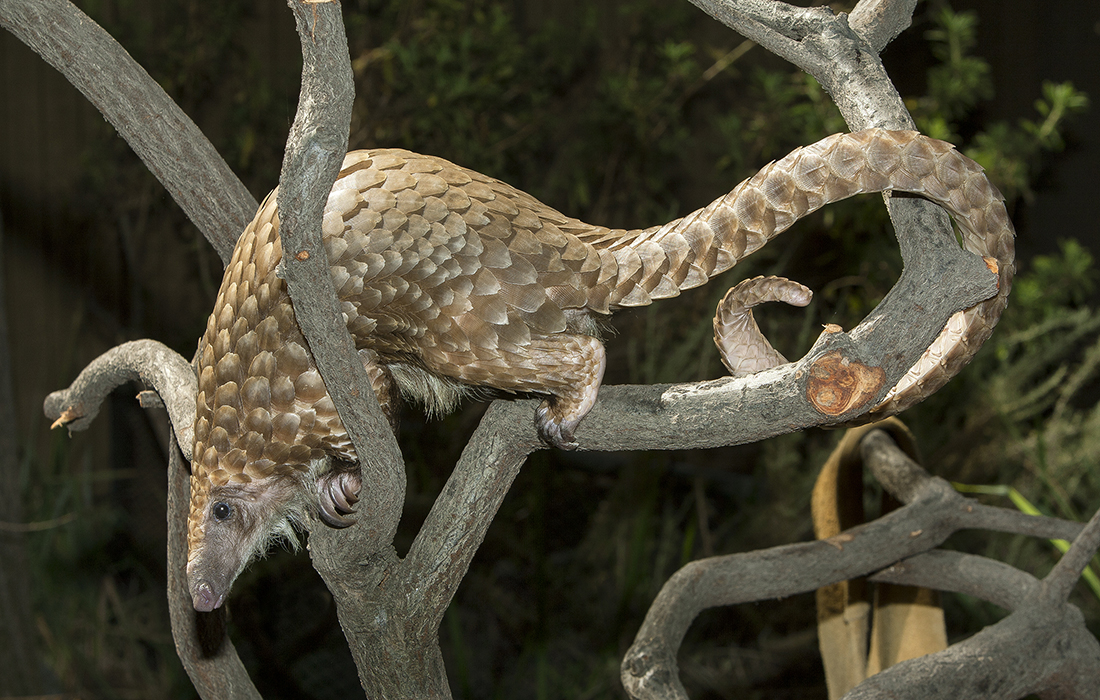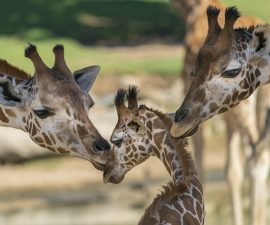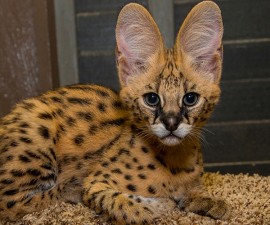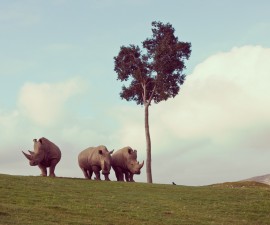Wildlife trafficking is taking a terrible toll on animal and plant species around the world.
BY Karyl Carmignani
Photography by Ken Bohn
The escalation of wildlife trafficking is one of the biggest threats to the survival of numerous species around the world. Despite common perception, the United States is one of the largest consumers of smuggled wildlife and wildlife products, with an estimated market value of around $2 billion. Consumers use illegally collected plants and animals for wild meat, the pet trade, traditional medicine, trophies, decorations, luxury status symbols, and private collections. While trade in sustainably collected, non-endangered wildlife is legal, the rarer the animal or plant, the higher the demand for it—which compels criminals to poach and gather these species at unsustainable levels, often using violence. Wildlife trafficking creates many problems, including appalling conditions for transported wildlife, funding for terrorist groups, and massive local economic and ecological losses. It also undermines a nation’s efforts to manage its natural resources. Compounding the problem is a pattern of relatively light punishment (fines and probation, rarely jail time) for wildlife trafficking. Whether species are smuggled “live” or in pieces, wildlife trafficking is a grim, multibillion-dollar black market business with devastating consequences for wildlife.
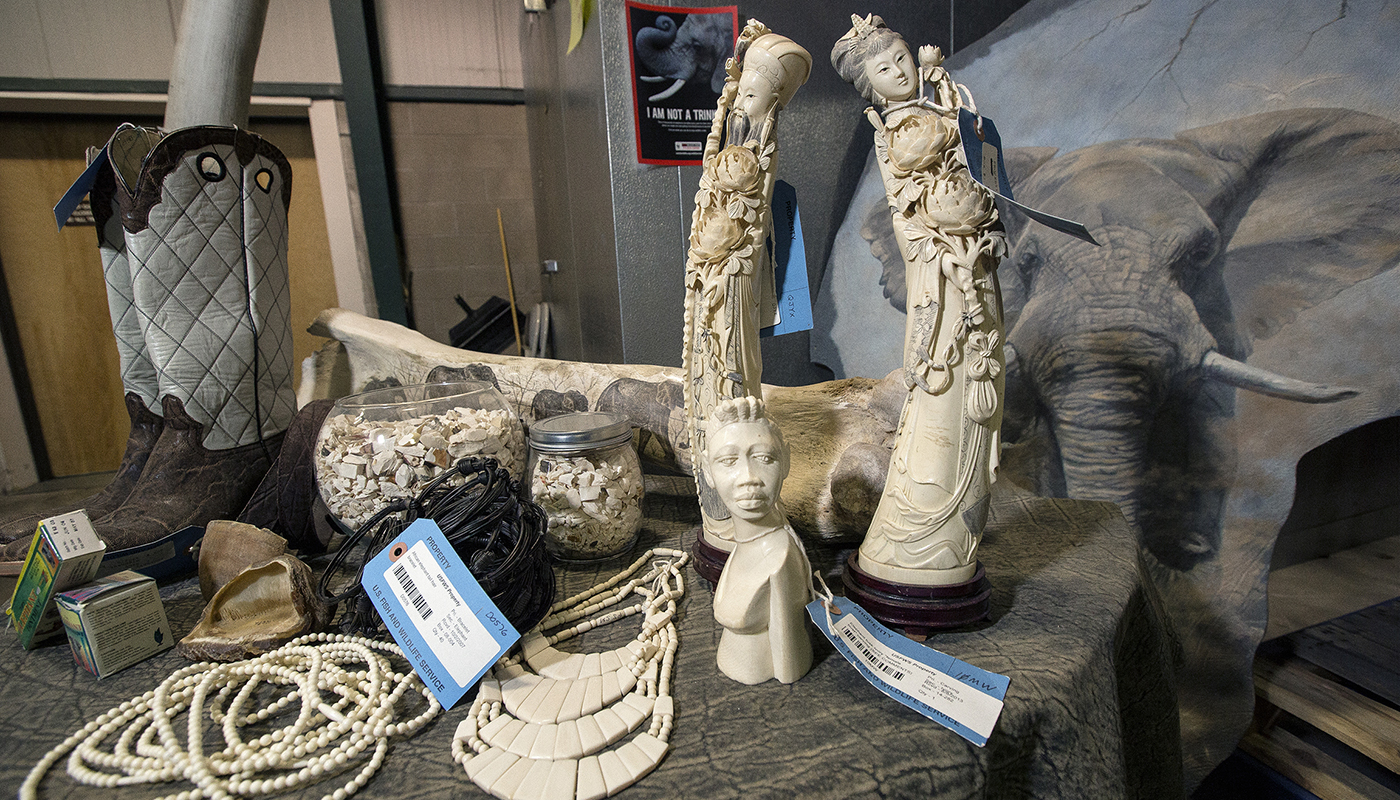
Collaborative Task Force
San Diego Zoo Global is committed to reducing this burgeoning threat to wildlife, as part of our continuing efforts to end extinction. We have formed a Wildlife Trafficking Task Force (WTTF), which collaborates with the U.S. Fish and Wildlife Service (USFWS) and other law enforcement agencies and conservation organizations to help stop wildlife trafficking. As a respected organization that is located near multiple ports of entry, San Diego Zoo Global is often called upon when animals are confiscated at the US-Mexico border or at Los Angeles International Airport (LAX), the number-one gateway linking the US to Asia and the Pacific.
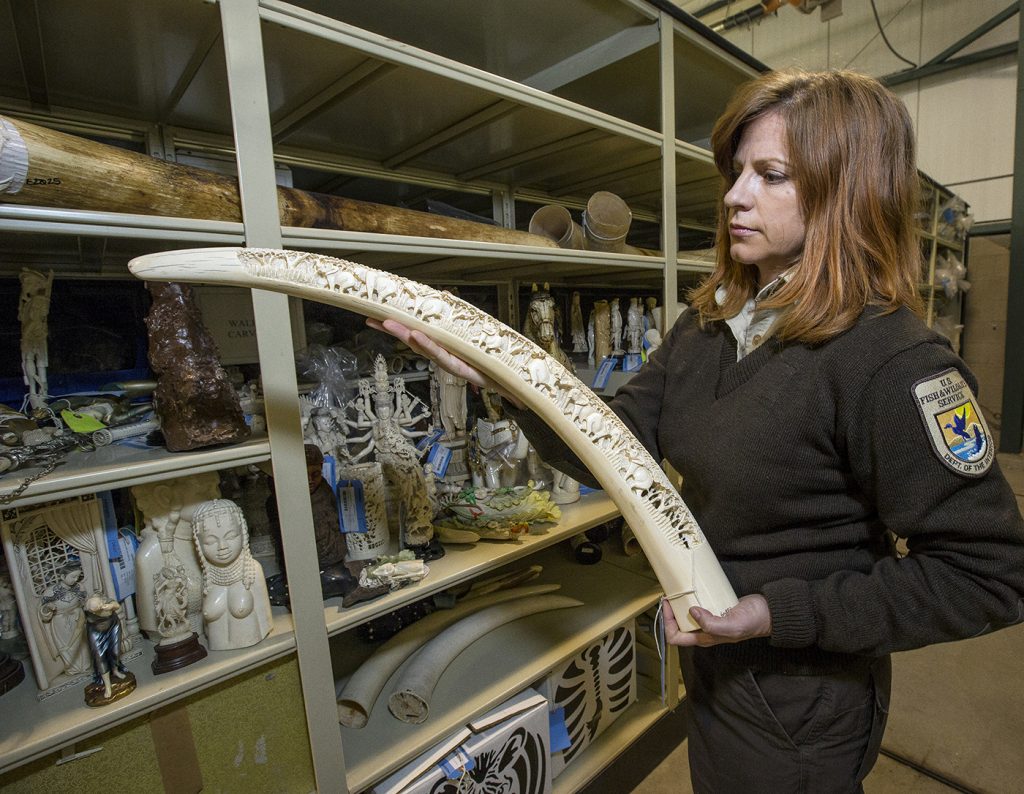
DARK SIDE OF IVORY
Coleen Schaefer, Supervisory Wildlife Repository Specialist at the U.S. Fish and Wildlife Service National Eagle and Wildlife Property Repository, with confiscated items representing the slaughter of scores of animals.
“LAX is the most-used port for shipping reptiles out of the US, usually to China and Vietnam, including millions of native turtle species,” explained Kim Lovich, curator of herpetology at the San Diego Zoo. When illegal shipments of animals are confiscated coming into the US, the San Diego Zoo is often asked to assist with animal care and veterinary expertise or shelter for the contraband animals. “By the time the animals are confiscated, they are often dehydrated and compromised, and a risk to our healthy collection animals,” said Kim, “but they still need a safe haven while the criminal case unfolds, which can take months or even years.”
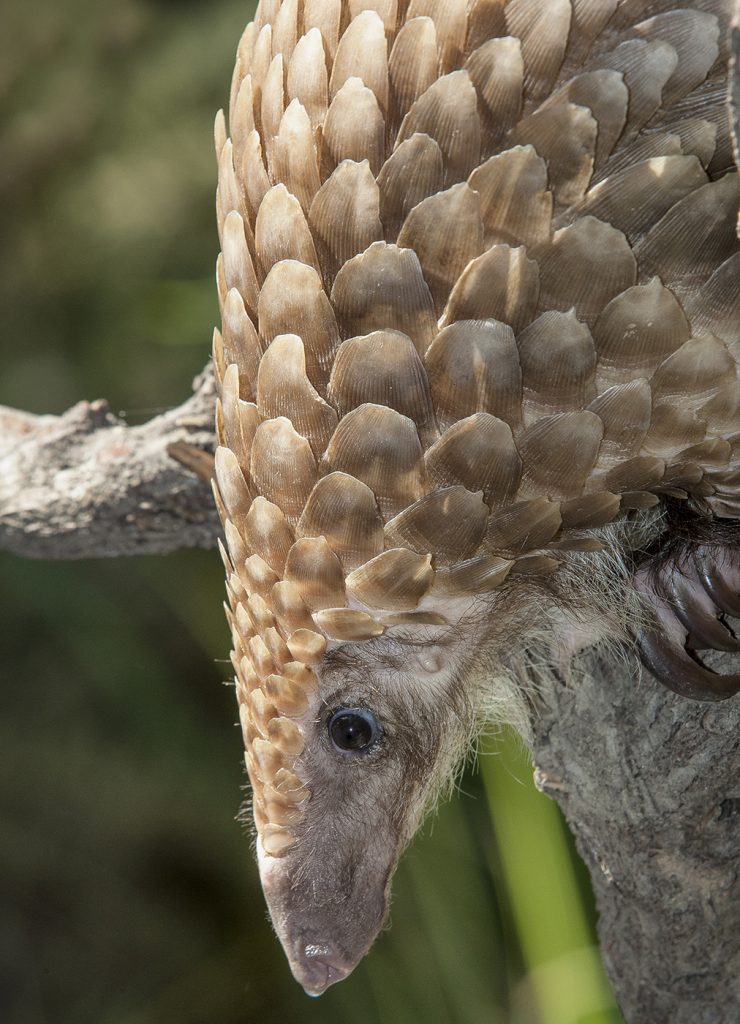
TIPPING THE SCALES
Heavily hunted for its scales and meat, pangolins are one of the most highly poached and trafficked species on the planet.
San Diego Zoo Global currently provides critical assistance with live reptile, amphibian, fish, and invertebrate confiscations. The bird department has also assisted with various confiscations, providing sanctuary, care, and expertise. Our Horticulture Department serves as a designated Plant Rescue Center, accepting confiscated orchids, cycads, cacti, and succulents. Few mammals survive the journey to the border; for instance, the San Diego Zoo once cared for a pangolin that was the sole survivor in a confiscated shipment of 10 animals. He was a Zoo ambassador for his species for many years, until he passed away in 2016. This unusual scaled mammal is one of the most heavily poached and trafficked species in the world.
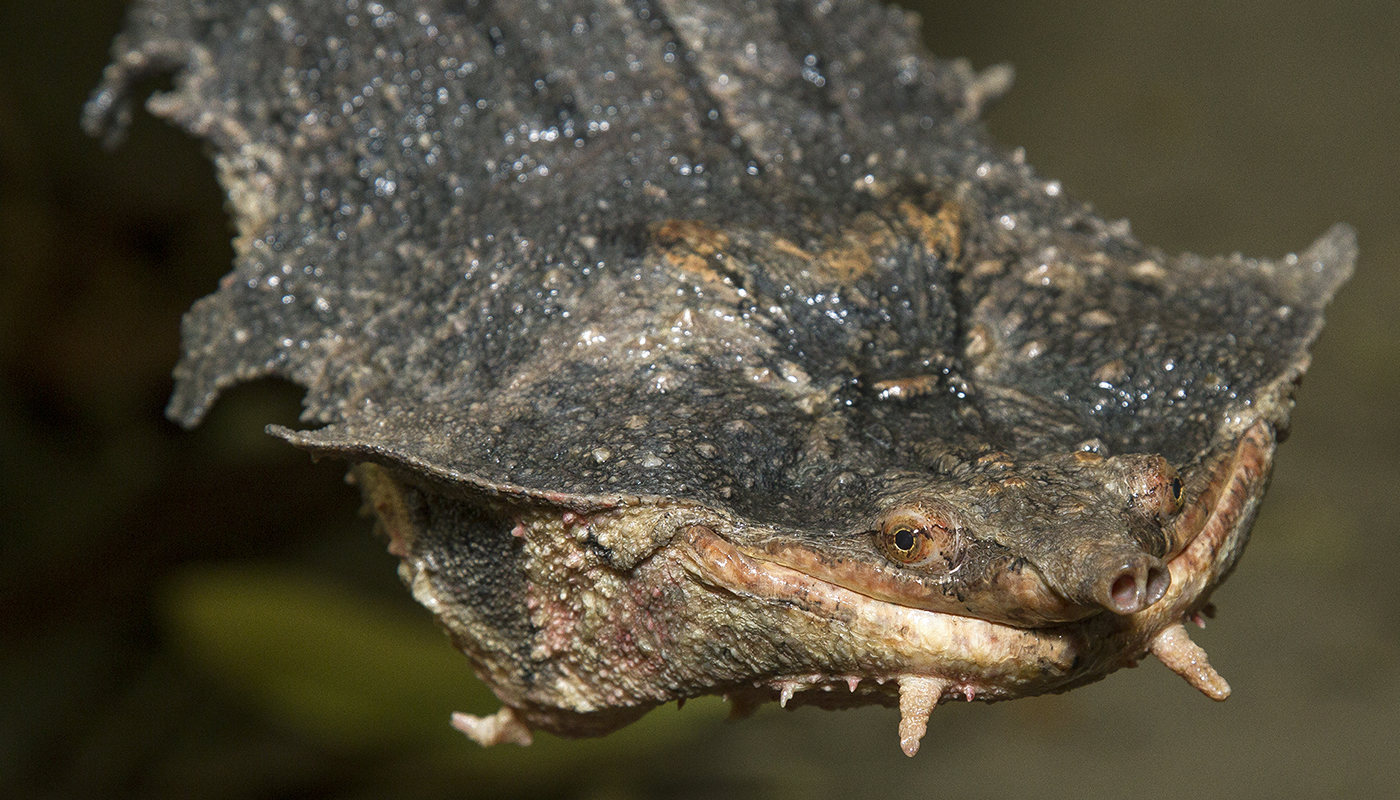
 As a consumer, be discerning about where your pets come from—do not purchase wild-caught animals!
As a consumer, be discerning about where your pets come from—do not purchase wild-caught animals!
Do not use or consume wildlife products including rhino horn, ivory, bushmeat, pangolin scales, fur, or feathers.
Avoid plants, seeds, dried leaves, and cuttings of unknown origin; only buy plants from reputable dealers.
Don’t participate in trophy hunts.
When in doubt, rule it out!
Cold-blooded Crimes
While many types of living things, from plants to primates, are plucked from their native environment and transported by the sinister black market, reptiles remain at the top of the list. Perhaps because many can survive days or even weeks without food and water, they don’t make much noise in transit, and collectors are willing to shell out a lot of money for a rare or endangered specimen, reptiles and amphibians form the backbone of this illegal trade. With only 38 out of 328 US ports staffed by USFWS full time, smuggling can seem like a winning proposition to criminals. But the animals are smuggled in deplorable, cramped conditions—wildlife traffickers are motivated by profit and greed—and survivorship of animals is low. Some recent survivors confiscated at LAX include 125 chameleons with forged “permits,” 100 pancake tortoises, 15 lizards stuffed in a money belt, and 450 mata mata turtles, which arrived via Colombia, making it next to impossible to return them to the wild. Kim explained that a “small-scale confiscation” can consist of 50 turtles or tortoises, but may have a $55,000 street value. Species that are “pretty and stay small” are especially popular as pets and plundered with impunity.
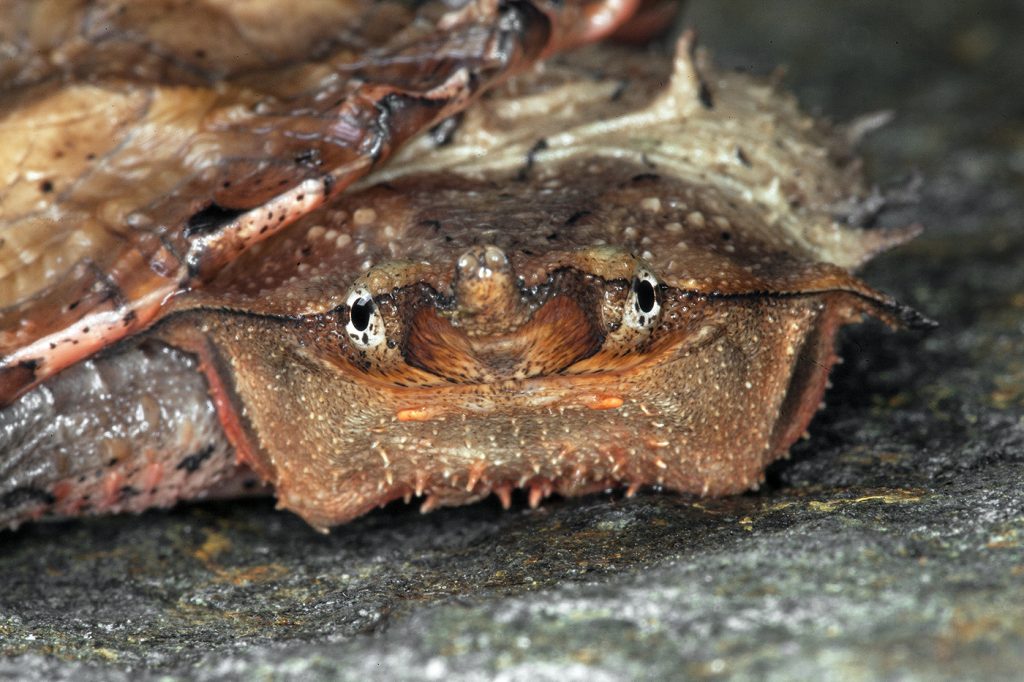
MATA MATA MATTER
The long-necked, fresh water mata mata turtle from South America is, unfortunately, popular with collectors, which drives illegal collection of this reptile.
Fortunately, not all wildlife traffickers get off scot-free. The San Ysidro Port of Entry, connecting San Diego with Tijuana, sees about 50,000 vehicles and 25,000 pedestrians in northbound traffic per day. Despite these odds, last fall some coolers were searched by customs officials, and beneath a layer of legal seafood were over 900 olive ridley and Kemp’s ridley sea turtle eggs, representing about 10 percent of the species’ reproduction for the season. The eggs of these protected species were stolen from nests in the sand. Sea turtle eggs are considered a delicacy and an aphrodisiac in some cultures and can fetch $100 to $300 each, yielding a possible profit of $250,000. The criminals were sentenced to six months in jail and ordered to pay restitution. While it doesn’t make up for the vast loss to the sea turtle population, it is a step in the right direction to deter wildlife traffickers.
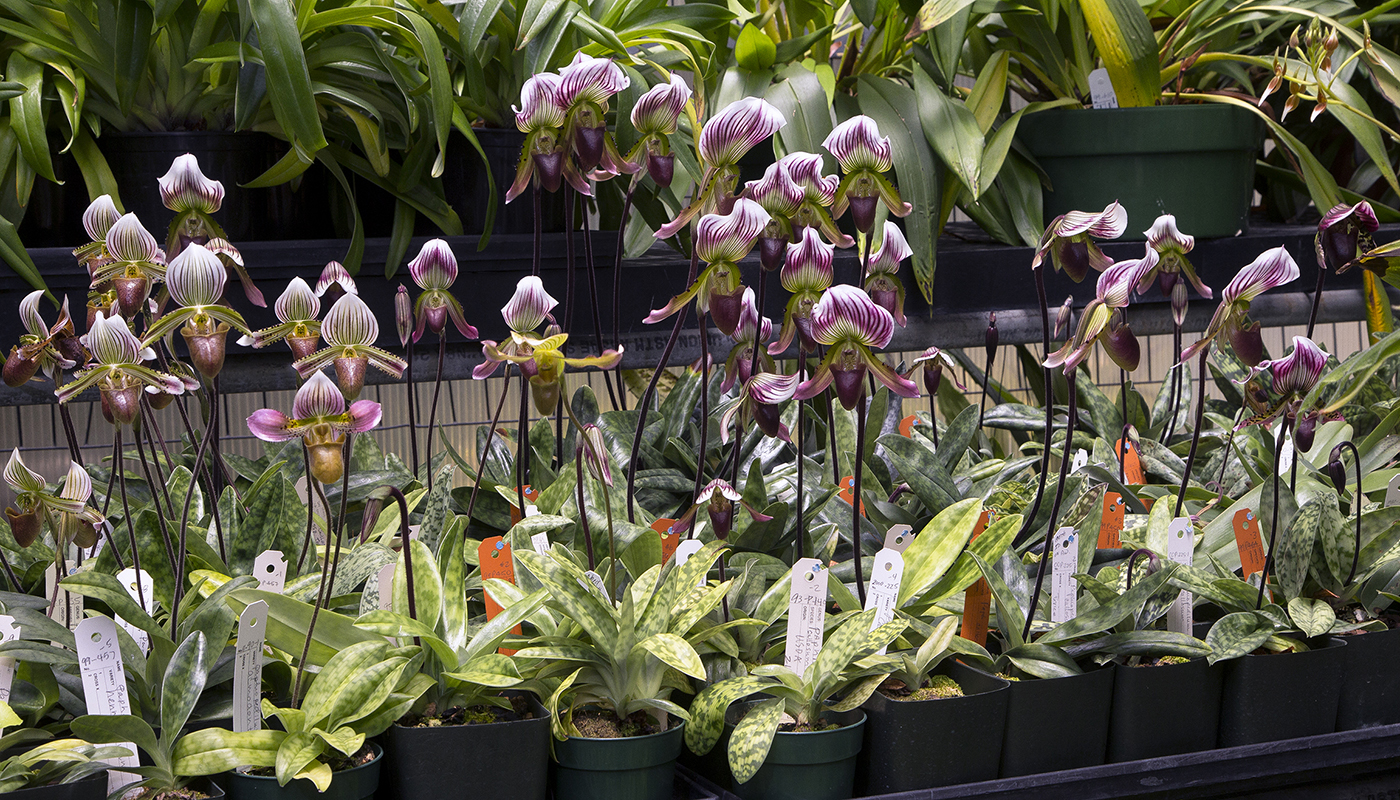
Orchid Thieves
Many people are unaware that transporting plants across international borders requires permits and paperwork. “Plants have the same protection as animals,” explained Janette Gerrity, senior horticulturist at the Zoo. “You know not to take a panda out of China, but do you know not to take an orchid out of Costa Rica?” Decades ago, wild spaces around the world were being plundered of plants like orchids, cycads, cacti, and succulents. In response to the crisis, the San Diego Zoo’s Horticulture Department applied for and was granted designation as a Plant Rescue Center in 1988.
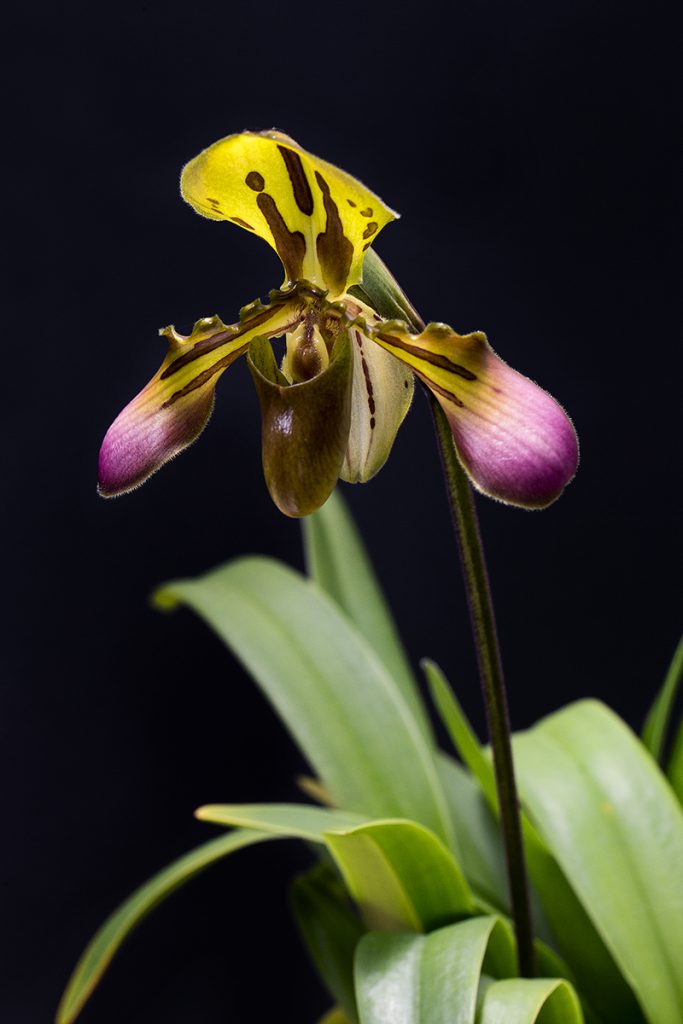
UNCOMMON BEAUTY
This Paphiopedilum tigrinum orchid is one of the most confiscated plants at border crossings.
Since then, bundles, cuttings, and seeds of plants have found their way to the safety of greenhouses at the Zoo. But, as Janette explained, with orchids you don’t always know what you have until it blooms, which can take years! Each international plant shipment requires phytosanitary and CITES permits, and without them, they can be confiscated at a border. One large plant shipment was wrapped in newspaper, dehydrated and nearly dead. “We unpacked the plants and we could tell by the roots that they were ripped out of the ground,” she said. “It was clear they were stolen from the wild.” The horticulture team nursed the plants back to health, and they are now thriving in the Orchid House. While plant confiscations may have tapered off in recent years, there are still plenty of admirers and collectors. “Orchids are the pandas of the plant world,” Janette added.
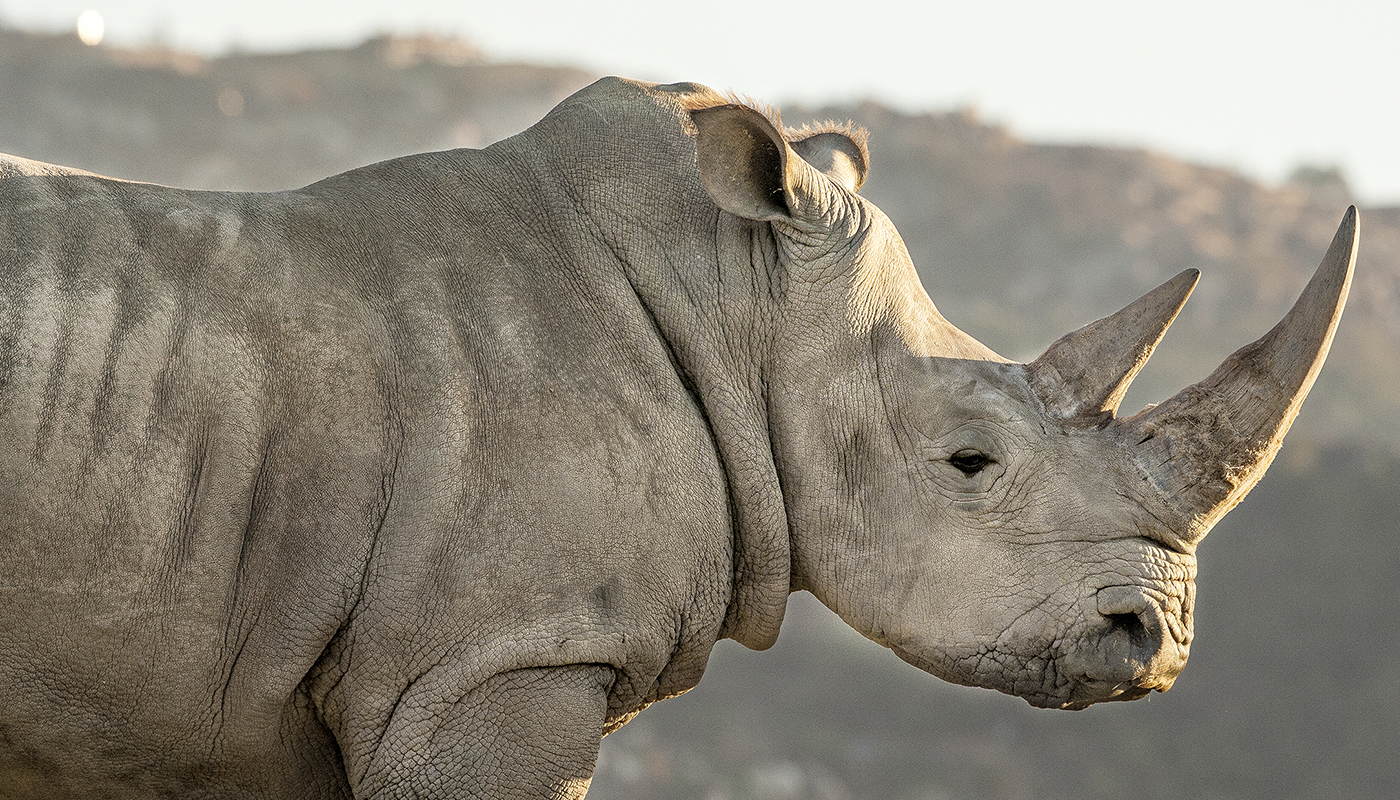
Fighting Back
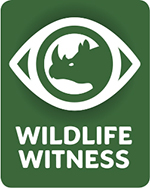 San Diego Zoo Global helps support the Wildlife Witness smartphone app, which travelers to Southeast Asia can use to report incidents of wildlife trafficking that they see (visit wildlifewitness.net for more information).
San Diego Zoo Global helps support the Wildlife Witness smartphone app, which travelers to Southeast Asia can use to report incidents of wildlife trafficking that they see (visit wildlifewitness.net for more information).
While confiscated wildlife represents a mere tip of the iceberg, there has been a shift in understanding of the shocking toll wildlife trafficking takes on species, ecosystems, and future generations. Despite being outnumbered and outgunned, communities, organizations, and world leaders are fighting back against these crimes. In September 2015, US President Obama and Chinese President Xi Jinping agreed to enact sweeping bans on ivory imports and exports to help staunch the slaughter of African elephants. California became the third US state to ban the sale of ivory, and the law resulting from Assembly Bill 96, supported by San Diego Zoo Global and other conservation organizations, was broadened to outlaw the sale of rhino horn, as well. Some airlines and cruise ship lines have banned transporting wildlife “trophies” as part of the US Wildlife Trafficking Alliance.
San Diego Zoo Global supports the work of TRAFFIC, the wildlife trade monitoring network that strives to change behavior and cultivate social responsibility by targeting consumers of rhino horn and other items produced by the illegal wildlife trade. TRAFFIC Southeast Asia has a communication effort in Vietnam that includes a public service announcement featuring admired leaders insisting that “character comes from within, not a piece of rhino horn,” a message that resonates within the culture. It is a novel approach and proving successful in some areas. Another tool is an app called Wildlife Witness, created by TRAFFIC and Australia’s Taronga Zoo, with support from partners including San Diego Zoo Global. The app enables citizens to report illegal wildlife trade they notice or encounter during their travels, and the collected data will help officials detect and combat wildlife trafficking networks. Right now, the app focuses on Southeast Asia, and people traveling in that region can use the app to report any wildlife trafficking activity they come across. Eventually, the hope is to expand the app’s reporting abilities to other areas of the world, as well. Wildlife Witness is a free app that can be downloaded on iPhones and Androids (visit wildlifewitness.net for more information).
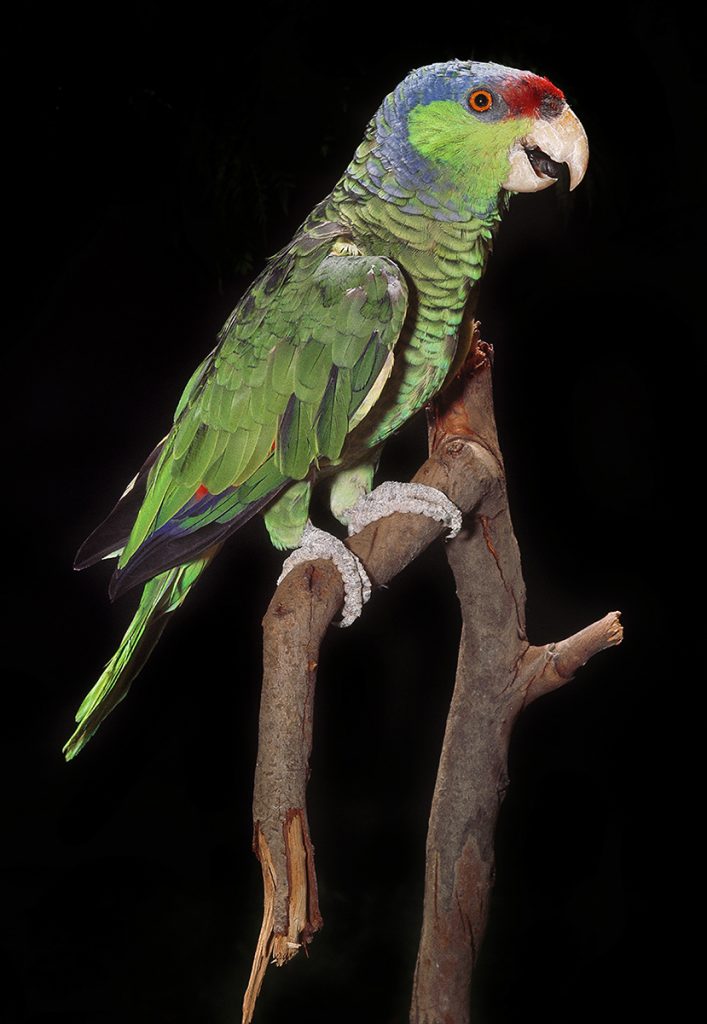
AVIAN ADVERSITY
Birds, like this lilac-crowned parrot, are brutally captured, “packaged,” and smuggled to be sold in pet shops or online. Few survive the journey.
From parrots stuffed into plastic water bottles, to primates in suitcases, to reptiles in fanny packs, smugglers have little conscience for the collected wildlife they are transporting to sell to the highest bidder. It is a complex, well-trod system that yanks animals from the wild and stows them in often-deadly conditions to be smuggled to a bustling port of entry, where officials may or may not detect the illegal imports. It’s time we all step up and stop this terrible trade!

